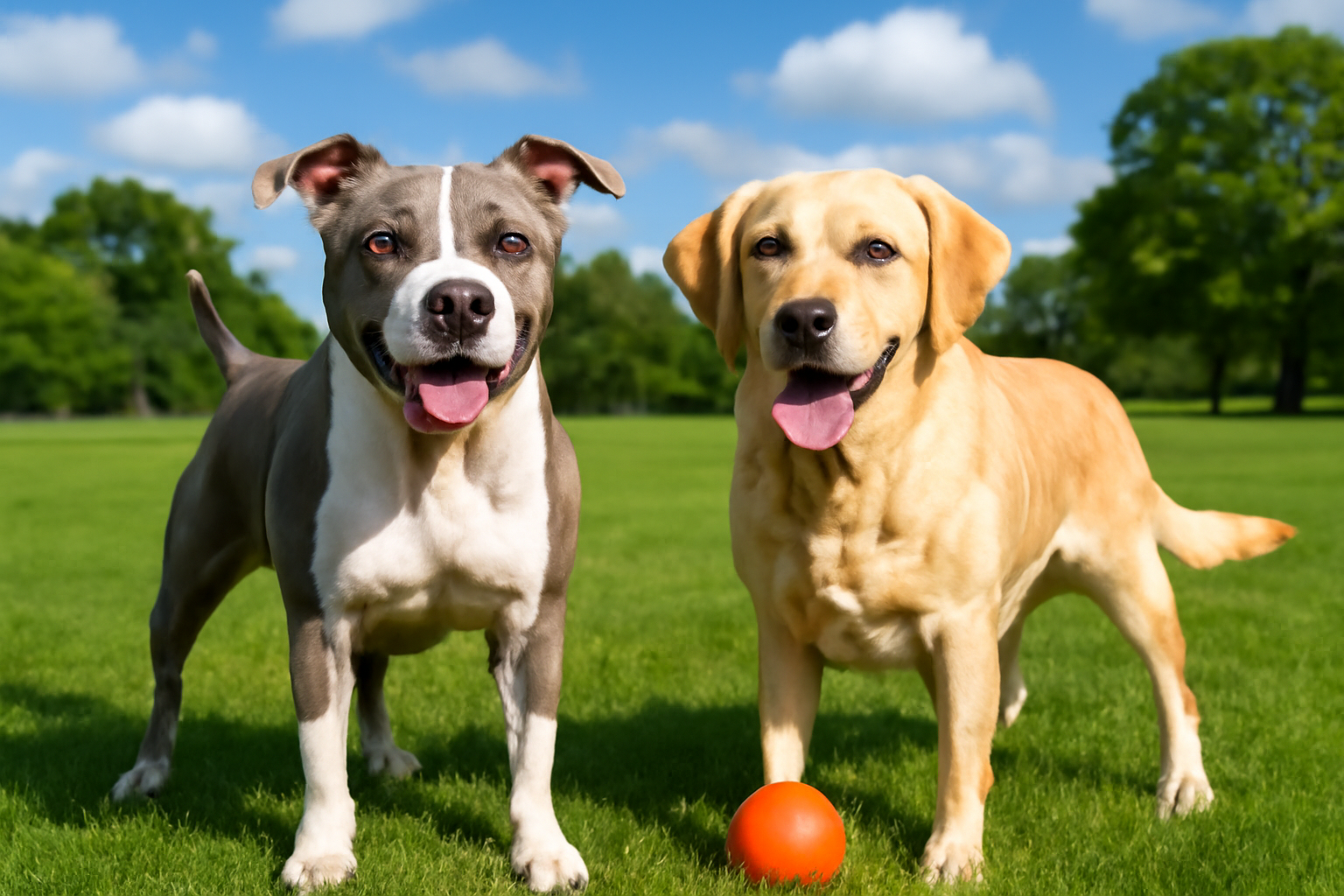Pit Bulls and Labradors are two types of dogs that have a lot of energy and enjoy playing and running. However, they have different exercise needs and learn in different ways. This guide demonstrates the best activities, daily routines, safety tips, and important considerations for each type of dog to keep them happy and healthy.
Exercise Needs
Pit Bulls
Pit Bulls are strong, energetic dogs that love to exercise. They need 1 to 2 hours of exercise every day, divided into two or three sessions. Even older Pit Bulls should engage in 30 to 45 minutes of light activities to stay healthy and happy.
Labradors
Labradors also have a lot of energy and require 60 to 90 minutes of daily exercise. They enjoy walking, running, and swimming to feel good and avoid boredom.
Exercise Activity Comparison
Fun Activities for Dogs
- Brisk Walks or Jogging: Important for maintaining heart health.
- Playing Fetch: An exciting game where dogs run and bring back objects.
- Swimming: A fun, low-impact activity that is great for the joints.
- Agility and Obstacles: Challenges that make dogs think and exercise.
Fun Activities for Pit Bulls
- Tug-of-War: A great way to strengthen the jaws and upper body of the dog. Remember to have rules to prevent the dog from becoming dominant.
- Spring Pole Play: Pulling against a spring pole can help strengthen muscles. Ensure the pole is securely attached and supervise the play.
- Weighted Vest Walks or Weight-Pulling: These activities can help increase strength when done gradually and carefully.
- Dock Diving: Jumping into the water strengthens explosive power and provides cardiovascular exercise.
Fun Activities for Labradors
- Swimming and Water Fetch: Helps strengthen muscles and keep joints healthy.
- Hide-and-Seek and Scent Games: Engage Labradors’ sense of smell and keep their minds sharp.
- Playing with Friends or Visiting Dog Parks: Labradors love being with other dogs and have a great time.
Creating Daily Routines by Breed and Age
Daily Exercise Suggestions
| Breed & Age | Daily Exercise Duration | Type of Activity | Notes & Safety |
|---|---|---|---|
| Pit Bull Adult | 60–120 minutes | Walks, fetch, tug, spring pole, weighted walks/swims | Supervise play to avoid overexertion; allow breaks and hydration. |
| Pit Bull Senior | 30–45 minutes | Leisure walks, light fetch, swimming | Avoid high-impact activities; monitor for joint issues. |
| Labrador Adult | 60–90 minutes | Walks, fetch, swimming, group play | Labs excel in water and social games. |
| Labrador Senior | 30–60 minutes | Short walks, low-impact play, puzzle toys | Adjust intensity based on health and weight. |
Mental Stimulation
All dog breeds greatly enjoy using their minds. Incorporate puzzle toys, scent work, and training sessions into their routines, especially on days when they don’t run much. This helps keep their brains sharp and prevents boredom.
Training & Safety Tips
- Warm-Up: Start with light walks or play to protect the joints.
- Gradual Intensity: Increase activity intensity gradually; avoid sudden changes, especially for older dogs.
- Monitor Body Language: Keep an eye out for signs of fatigue or overheating. Stop the activity if your dog seems uncomfortable.
- Hydration: Always have fresh water available, especially during play or on hot days.
- Obedience Cues: Incorporate commands like “come” and “drop it” during play to maintain control and reinforce training.
About the Dog Breeds
Pit Bulls enjoy exercises that build strength, such as tugging and weight work. They need a firm owner and structured training to help control their strong instincts. Labradors excel in endurance activities and love being social. They are natural retrievers and enjoy games like fetch and playing in the water.
Having a regular routine is more important than performing very intense exercises. Both Pit Bulls and Labradors are happier when they participate in a mix of cardio exercises, mental challenges, and strength training throughout the week. This balanced approach helps prevent behavioral problems and enhances the overall health and happiness of both Pit Bulls and Labradors.
